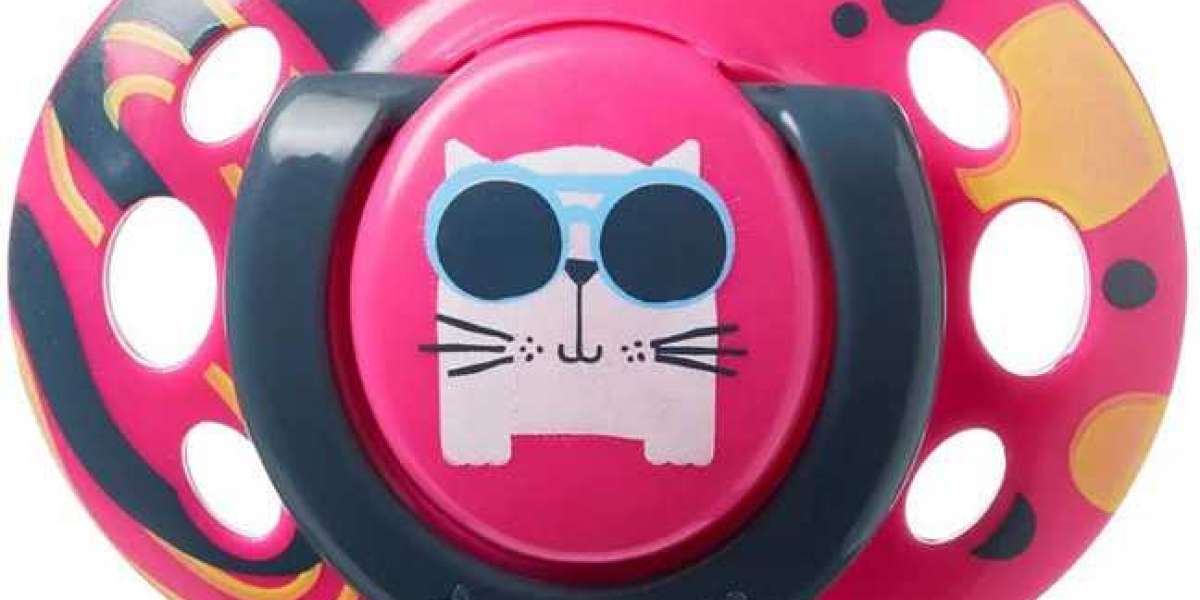Pacifiers, those tiny tools of comfort, can make a world of difference for both babies and parents. But with so many options available, how do you choose the perfect one for your newborn? In this comprehensive guide, we'll explore everything you need to know about selecting the right newborn pacifier to ensure your little one is happy and content.
Understanding Pacifiers
Pacifiers, also referred to as soothers or binkies, are essential tools in the arsenal of parents seeking to comfort their little ones. These small, nipple-shaped devices serve a crucial purpose by mimicking the natural instinct of babies to suck, offering them solace and contentment. Beyond mere convenience, pacifiers often play a pivotal role in calming fussy infants, providing much-needed relief to both babies and parents alike.
Their ability to help babies self-soothe is particularly noteworthy, as it empowers infants to regulate their emotions and find comfort independently. From sleepless nights to long car rides, pacifiers can be a literal lifesaver for frazzled caregivers, offering a moment of respite amidst the challenges of early parenthood. In essence, these simple yet effective devices serve as a comforting beacon for babies navigating the unfamiliar terrain of the world outside the womb, providing a sense of security and reassurance during those tender early months of life.
Benefits of Using Pacifiers
Reduced Risk of SIDS: Studies have shown that the use of pacifiers during sleep can reduce the risk of Sudden Infant Death Syndrome (SIDS).
Soothing Effect: Pacifiers can help calm a fussy baby and provide comfort during times of distress.
Self-Soothing: Using a pacifier can teach babies to self-soothe, which can be beneficial for both the baby and the parents.
Safety Considerations
Safety considerations are paramount when selecting a pacifier for your newborn. It's crucial to prioritize products crafted from safe materials, devoid of any harmful chemicals that could potentially endanger your baby's health. Additionally, opt for pacifiers designed specifically to mitigate choking hazards, ensuring your little one's safety and peace of mind. Taking these precautions can significantly enhance the safety and well-being of your precious bundle of joy.
Choosing the Right Material
Silicone vs. Latex:
Pacifiers come in two main materials: silicone and latex. Silicone pacifiers are firmer and easier to clean, while latex pacifiers are softer and more flexible. When choosing between the two, it's essential to consider not only the material's texture but also any potential allergies your baby might have. Silicone pacifiers are typically more durable and can withstand higher temperatures, making them suitable for sterilization methods like boiling or steam sterilization.
BPA-Free:
When selecting pacifiers for your little one, prioritize those labeled as BPA-free to guarantee they are devoid of any potentially harmful chemicals. Opting for BPA-free pacifiers provides peace of mind, knowing that your baby is not exposed to substances that could have adverse effects on their health and well-being.
Size and Shape Matters
The size and shape of the pacifier nipple play a crucial role in your baby's comfort and acceptance. Choose a pacifier with a nipple shape that mimics the natural shape of a mother's breast to facilitate proper oral development. Additionally, consider the size of the nipple to ensure it fits comfortably in your baby's mouth without causing any strain or discomfort.
Nipple Design
Look for pacifiers with orthodontic or symmetrical nipples designed to promote healthy oral development and reduce the risk of dental problems later on. Orthodontic pacifiers are shaped to mimic the natural shape of a baby's mouth, which helps in proper alignment of teeth and jaw development. Symmetrical nipples ensure that the pacifier can be inserted into the baby's mouth in any orientation, reducing the likelihood of nipple confusion.
Easy to Clean
Choose pacifiers that are easy to clean and sterilize to maintain proper hygiene and reduce the risk of bacterial infections. Look for pacifiers made from materials that are dishwasher-safe or can be sterilized using boiling water or a sterilization unit. Regular cleaning of pacifiers is essential to prevent the buildup of bacteria and ensure your baby's safety and well-being.
Pacifier Compatibility
Consider compatibility with pacifier clips or holders to prevent loss and keep the pacifier within easy reach. Pacifier clips or holders can be attached to your baby's clothing or stroller, ensuring that the pacifier stays clean and accessible whenever your baby needs soothing. Additionally, some pacifiers come with built-in features such as loops or handles that make them easy to attach to clips or holders.
Pacifier Alternatives
If your baby refuses a pacifier, consider alternatives such as finger sucking, swaddling, or offering a clean finger for sucking comfort. Every baby is different, and while some may find comfort in pacifiers, others may prefer different soothing methods. Pay attention to your baby's cues and preferences, and don't hesitate to explore alternative soothing techniques if pacifiers are not well-received.
Transitioning from Pacifiers
When the time comes to wean your baby off pacifiers, do so gradually to minimize discomfort and resistance. Offer comfort and support during the transition period.
Conclusion
Choosing the right newborn pacifier involves considering factors such as safety, material, size, and design. By selecting a pacifier that meets your baby's needs and preferences, you can provide comfort and support while promoting healthy oral development. Additionally, online baby shopping offers a convenient way to explore a wide range of pacifier options, compare prices, read reviews, and make informed decisions from the comfort of your home. With just a few clicks, you can find the perfect pacifier for your little one and have it delivered right to your doorstep, saving you time and hassle.
FAQs
1. How many pacifiers should I buy for my newborn? It's a good idea to have a few pacifiers on hand, as they tend to get lost easily. Start with 2-3 and see how your baby responds.
2. Can pacifiers cause dental problems? Pacifiers are generally safe when used appropriately, but prolonged use or improper use can contribute to dental issues such as misalignment. It's essential to monitor your baby's pacifier use and wean them off at the appropriate time.
3. When should I replace my baby's pacifier? Inspect the pacifier regularly for signs of wear and tear, such as cracks or tears. Replace it immediately if you notice any damage to ensure your baby's safety.
4. How do I clean a pacifier? Wash the pacifier with warm, soapy water and rinse thoroughly after each use. You can also sterilize it by boiling it in water for a few minutes or using a sterilizer.
5. What if my baby refuses a pacifier? Not all babies take to pacifiers, and that's okay. Offer alternative comfort measures such as swaddling, gentle rocking, or skin-to-skin contact to soothe your baby.


